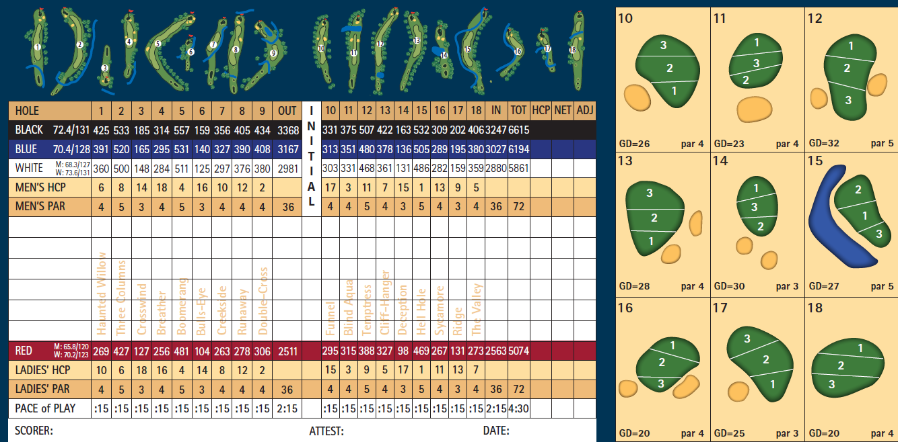SIMPLE EXPLANATION OF SLOPE AND RATING
USGA Course Rating is an evaluation of the difficulty of a golf course for scratch golfers. (More specifically, the number is an estimate of the average scores of the best 50-percent of rounds played by scratch golfers at the course being rated.)
Course rating is very easy to understand because it is expressed in strokes. A par-72 course that is easy might have a course rating of 68.9; one that is difficult might have a course rating of 74.5. That means that a scratch golfer should be expected to average 68.9 strokes in his better rounds at the easier course; and 74.5 at the more difficult one.
Slope rating (a term trademarked by the United States Golf Association) is a measurement of the difficulty of a golf course for bogey golfers relative to the course rating.
Course rating tells scratch golfers how difficult the course will be; slope rating tells bogey golfers how difficult it will be.
To put it another way: USGA Course Rating tells the best golfers how hard a golf course actually plays; USGA Slope Rating indicates how much harder the course plays for "regular" (meaning not among the best) golfers.
The minimum slope rating is 55 and the maximum is 155 (slope does not relate specifically to strokes played as course rating does). When the slope rating system was first put into effect, the USGA set the slope for an "average" golf course at 113; however, not many 18-hole golf courses have slope ratings that low. Some do, but the real-world average is higher than 113. (However, a slope of 113 is still used in certain calculations within the handicap system.)
